Monthly Archives: October 2017
 For a number of years, I was out of touch with my cousin Dennis Fredrick, but all that changed a couple of years ago, when we started emailing. That has turned into a true friendship and I think it has been a blessing to both of us. Of course, our love of family history has given us common interests to explore, but there was so much more, because as cousins, we had a lot of memories to share too. I feel very blessed to have my cousin back in my life again. We are currently working together of different aspects of our research…or at least sharing our finds, because that is really what is so exciting about finding new family history information.
For a number of years, I was out of touch with my cousin Dennis Fredrick, but all that changed a couple of years ago, when we started emailing. That has turned into a true friendship and I think it has been a blessing to both of us. Of course, our love of family history has given us common interests to explore, but there was so much more, because as cousins, we had a lot of memories to share too. I feel very blessed to have my cousin back in my life again. We are currently working together of different aspects of our research…or at least sharing our finds, because that is really what is so exciting about finding new family history information.
One of the things that I found out recently about Denny was that, like his dad, his grandpa, his brother, and nephews, Denny builds furniture sometimes. And he does a very fine job of it. Not everyone has the ability to build furniture, and if we attempt, it often looks like a box slapped together. Not so, with Denny. I think his work looks like it was made in a factory…perfect. The dresser is for his daughter-in-law, Carrie Fredrick, who is feeling very blessed right now. Denny comes by is skill from a long like of furniture builders. Our grandpa, Allen Luther Spencer built furniture, as did Denny’s dad, Fritz Fredrick, who built the baptismal font for the little church in Holyoke, Minnesota. Denny’s brother, Gene Fredrick, who sadly passed away a number of years ago, also built beautiful furniture, as did Gene’s sons Tim and Shawn.
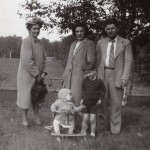
Denny, as we have called him all my life anyway, has a heart of gold, and really wants to be a part of the lives of his family, even those of us who live far away. It’s so easy to lose touch with friends and family, and while we often don’t feel the loss until we reconnect, sadly sometimes that never happens, and when a loved one is gone, we really fell that missed time. For that reason, I am so glad that Denny and I have reconnected while we are both still alive, and young enough to remember and enjoy the connection. I just wish I had more time to stay in touch, because since Denny retired, he is able to focus on the things he loves to do, which would be lovely. Today is Denny’s birthday. Happy birthday Denny!! Have a great day!! We love you!!

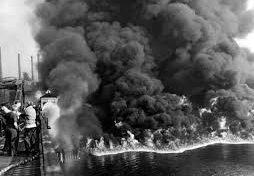 On October 20, 1944, in the city of Cleveland, Ohio, workers at the East Ohio Gas Company spotted a white vapor leaking from the large natural gas tank at the company plant near Lake Erie. It was 2:30 pm on that Friday afternoon, and a leak is never a good thing, but this one would prove to be disastrous. The circular tank had a diameter of 57 feet and could hold 90 million cubic feet of the highly flammable gas. Ten minutes later, a massive and violent explosion rocked the entire area. Flames went as high as 2,500 feet in the air. Everything in a half-mile vicinity of the explosion was completely destroyed. In the ensuing explosion, a smaller tank also exploded. The out-of-control fire that followed the explosion necessitated the evacuation of 10,000 people from the surrounding area.
On October 20, 1944, in the city of Cleveland, Ohio, workers at the East Ohio Gas Company spotted a white vapor leaking from the large natural gas tank at the company plant near Lake Erie. It was 2:30 pm on that Friday afternoon, and a leak is never a good thing, but this one would prove to be disastrous. The circular tank had a diameter of 57 feet and could hold 90 million cubic feet of the highly flammable gas. Ten minutes later, a massive and violent explosion rocked the entire area. Flames went as high as 2,500 feet in the air. Everything in a half-mile vicinity of the explosion was completely destroyed. In the ensuing explosion, a smaller tank also exploded. The out-of-control fire that followed the explosion necessitated the evacuation of 10,000 people from the surrounding area.
Originally built in 1902, the East Ohio Gas Company plant, spanned from East 55th to East 63rd Streets taking up a full ten acres. It provided natural gas to most of Cleveland, including many businesses in the neighborhood in which it was located. By 1940, part of the plant was converted to a liquefaction, storage, and regasification facility, which was one of the most modern gas plants in the country, safely storing large quantities of liquefied gas in four separate holding tanks. These days, we would not have these types of volatile substances stored in a residential area, but back then, before transportation became much more affordable, laborers in those early industrial cities had to be close to their places of employment. A gas storage facility was just one among many industrial operations that were located in a typical working-class neighborhood of that era. However, because the plant was modernized and had many safety features, people living in the area felt they had no reason to fear. That is, until a fateful day in October when “fire fell from the sky.”
The call went out to every firefighting unit in the Cleveland area. It took all of the city’s firefighters to bring the horrific industrial fire under control. In the end, the fire killed 130 people, destroyed two entire factories, 79 homes in the surrounding area and more than 200 vehicles. The total bill for damages exceeded $10 million. When the fire was out, rescue workers found that of the 130 people, killed by the blast, nearly half of the bodies were so badly burned that they could not be identified and in fact, 21 of them were never identified. Two hundred and fifteen people were injured and required hospitalization. The cause of the explosion had to do with the contraction of the metal tanks. The gas was stored at temperatures below negative 250 degrees and 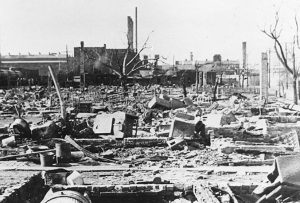
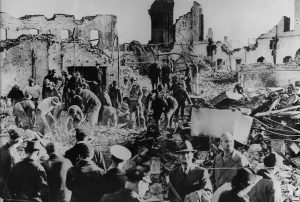 the resulting contraction of the metal had caused a steel plate to rupture. The East Ohio Gas Explosion has since been calculated to be equal to a 2.43 kiloton TNT explosion or 1/6 of the Hiroshima Atomic Bomb. In the aftermath of the fire, everyone knew that changes had to be made to protect laborers, and the people in the neighborhoods. Newer and far safer techniques for storing gas and building tanks were developed in the wake of this disaster.
the resulting contraction of the metal had caused a steel plate to rupture. The East Ohio Gas Explosion has since been calculated to be equal to a 2.43 kiloton TNT explosion or 1/6 of the Hiroshima Atomic Bomb. In the aftermath of the fire, everyone knew that changes had to be made to protect laborers, and the people in the neighborhoods. Newer and far safer techniques for storing gas and building tanks were developed in the wake of this disaster.
 Sometimes, changes occur when we least expect them. That is was happened with my daughter, Corrie Petersen, who found herself in a job that really held no future for her, even after she gave them almost 24 years of her life. Everyone wants to know that they are going to have a chance be promoted and move up in the company, but that was not to be the case, so after listening to the wisdom of God, Corrie made a bold move and went back to school. Corrie has been a caregiver, along with the rest of our family since 2005 when her grandpa, my dad, Allen Spencer got sick. Over the following ten years she was very active in the caregiving process, first with my dad, then my mom, and then her Schulenberg grandparents, and now she cares for her husband, Kevin. I don’t know how we could have managed with out Corrie and others in the family who, just like her, stepped up to pitch in, when we found out that caregiving takes a village.
Sometimes, changes occur when we least expect them. That is was happened with my daughter, Corrie Petersen, who found herself in a job that really held no future for her, even after she gave them almost 24 years of her life. Everyone wants to know that they are going to have a chance be promoted and move up in the company, but that was not to be the case, so after listening to the wisdom of God, Corrie made a bold move and went back to school. Corrie has been a caregiver, along with the rest of our family since 2005 when her grandpa, my dad, Allen Spencer got sick. Over the following ten years she was very active in the caregiving process, first with my dad, then my mom, and then her Schulenberg grandparents, and now she cares for her husband, Kevin. I don’t know how we could have managed with out Corrie and others in the family who, just like her, stepped up to pitch in, when we found out that caregiving takes a village.
When it came to Corrie that if she wanted to move up in a job, she needed a change, 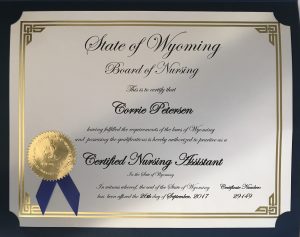 she naturally chose nursing, and began a journey that would bring about many changes and take her to levels of confidence she didn’t know she possessed. She went back to school, after 23 years, and conquered not only the classes, but her own uneasiness about taking them. I am happy to report that she is having great success in her studies. Corrie also took the CNA class at Shepherd of the Valley Care Center, knowing that when she started nursing school, she would no longer be able to keep the job she had, because the nursing program is held during the day. She passed the CNA program with flying colors and applied for a job at Elkhorn Valley Rehabilitation Hospital. She was hired right away, and today begins her new career as a CNA, or according to them, Patient Care Technician…temporarily anyway, because Corrie’s journey doesn’t end there. She has other plans in mind.
she naturally chose nursing, and began a journey that would bring about many changes and take her to levels of confidence she didn’t know she possessed. She went back to school, after 23 years, and conquered not only the classes, but her own uneasiness about taking them. I am happy to report that she is having great success in her studies. Corrie also took the CNA class at Shepherd of the Valley Care Center, knowing that when she started nursing school, she would no longer be able to keep the job she had, because the nursing program is held during the day. She passed the CNA program with flying colors and applied for a job at Elkhorn Valley Rehabilitation Hospital. She was hired right away, and today begins her new career as a CNA, or according to them, Patient Care Technician…temporarily anyway, because Corrie’s journey doesn’t end there. She has other plans in mind.

She will have other new beginnings as she continues her journey toward her degree as a Registered Nurse, so this is temporary, but it is nevertheless, very exciting. This is what she has dreamed about since this journey started. She knows the work will be hard, but it is also very rewarding as she also knows, since she has basically been doing this work for twelve years already. I am so excited for my daughter, as she starts this new adventure, and so proud of her for taking the necessary steps to achieve her goals. The future is going to be a bright one for her, and I can’t wait to watch the changes as she decides her future plans in her nursing career. Congratulations Corrie. Have a wonderful first night at work. We are so proud of you!!
 After losing his brother and his dad before he was nine years of age, my Uncle Jim Richards stepped up as a man in his family. Young as he was, he took on the role of a man, letting his family know that he would always be there for them. And so he was. Over the years, when one or the other of his family members needed help, Uncle Jim kept that promise…he was there for them. He took care of his mother, and helped with my grandparents, who were the parents of his wife, my Aunt Dixie. He helped several of his siblings and got them back on solid ground again. He proved himself to be a responsible man of the house…long after he was grown. He kept that promise to his dad, that his dad didn’t even have to ask of him. Uncle Jim did it because he wanted to show respect and honor to his dad, and because of his great love for his family.
After losing his brother and his dad before he was nine years of age, my Uncle Jim Richards stepped up as a man in his family. Young as he was, he took on the role of a man, letting his family know that he would always be there for them. And so he was. Over the years, when one or the other of his family members needed help, Uncle Jim kept that promise…he was there for them. He took care of his mother, and helped with my grandparents, who were the parents of his wife, my Aunt Dixie. He helped several of his siblings and got them back on solid ground again. He proved himself to be a responsible man of the house…long after he was grown. He kept that promise to his dad, that his dad didn’t even have to ask of him. Uncle Jim did it because he wanted to show respect and honor to his dad, and because of his great love for his family.
After his marriage to my Aunt Dixie, and the arrival of their three children, Jim, Jeannie, and Raylynn…Uncle  Jim set about building close family ties with his kids. His gentle ways and hard work made their home a place the family always wanted to be. Uncle Jim worked hard at his job, but when he came home…it was family time, and nothing else mattered. His kids always knew that their Dad was going to be there for them. As the kids grew up and got married, the grandchildren began to arrive. Uncle Jim was a man for whom family was the most important thing in life, and that showed with in the love he and Aunt Dixie had for their grandchildren. After his retirement, he joined Aunt Dixie, who already babysat the grandchildren, chauffeured them to and from school, and delivered an occasional payment or two to the proper places, while their children worked. His kids didn’t worry about things, because they know that their dad and mom are there for them. The grandchildren are safe and cared for, even when their parents are at work. That gives a parent a wonderful sense of peace concerning their kids, and not every parent has the option to have hands on grandparents.
Jim set about building close family ties with his kids. His gentle ways and hard work made their home a place the family always wanted to be. Uncle Jim worked hard at his job, but when he came home…it was family time, and nothing else mattered. His kids always knew that their Dad was going to be there for them. As the kids grew up and got married, the grandchildren began to arrive. Uncle Jim was a man for whom family was the most important thing in life, and that showed with in the love he and Aunt Dixie had for their grandchildren. After his retirement, he joined Aunt Dixie, who already babysat the grandchildren, chauffeured them to and from school, and delivered an occasional payment or two to the proper places, while their children worked. His kids didn’t worry about things, because they know that their dad and mom are there for them. The grandchildren are safe and cared for, even when their parents are at work. That gives a parent a wonderful sense of peace concerning their kids, and not every parent has the option to have hands on grandparents.
Through thick and thin, sickness and health, richer and poorer, and all things in between, the Richards family  has been able to count on Uncle Jim…especially in the worst of times, like the premature passing of a grandson, Jonah Williams; and now, a son-in-law, Darryl Liegman. Uncle Jim is a quiet man, but he has a strength that the family leans on in times of sorrow and need, and he is there for them. When he saw the need to help others at such a young age, he took the call seriously. He was there for every part of his family, for all the years of his life, and his loving kindness seems to radiate from him. Anyone who is around him can see it and they can feel it. Uncle Jim is just that way. His motto is: I’ll be there for you. And he has never let them down. Today is Uncle Jim’s 80th birthday. Happy birthday Uncle Jim!! Have a great day!! We love you!!
has been able to count on Uncle Jim…especially in the worst of times, like the premature passing of a grandson, Jonah Williams; and now, a son-in-law, Darryl Liegman. Uncle Jim is a quiet man, but he has a strength that the family leans on in times of sorrow and need, and he is there for them. When he saw the need to help others at such a young age, he took the call seriously. He was there for every part of his family, for all the years of his life, and his loving kindness seems to radiate from him. Anyone who is around him can see it and they can feel it. Uncle Jim is just that way. His motto is: I’ll be there for you. And he has never let them down. Today is Uncle Jim’s 80th birthday. Happy birthday Uncle Jim!! Have a great day!! We love you!!

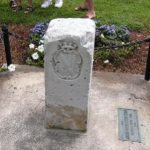 I think most of us have heard of the Mason-Dixon Line, but do we really know what it is and how it came to be called that? Maybe not. It was on October 18, 1767 that two surveyors, Charles Mason and Jeremiah Dixon completed their survey of the boundary between the colonies of Pennsylvania and Maryland, as well as areas that would eventually become the states of Delaware and West Virginia. The Penn and Calvert families had hired Mason and Dixon, two English surveyors, to settle their dispute over the boundary between their two proprietary colonies, Pennsylvania and Maryland. The dispute between the families often resulted in violence between the colonies’ settlers, the British crown demanded that the parties involved hold to an agreement reached in 1732. In 1760, as part of Maryland and Pennsylvania’s adherence to this royal command, Mason and Dixon were asked to determine the exact whereabouts of the boundary between the two colonies. Though both colonies claimed the area between the 39th and 40th parallel, what is now referred to as the Mason-Dixon line finally settled the boundary at a northern latitude of 39 degrees and 43 minutes. The line was marked using stones, with Pennsylvania’s crest on one side and Maryland’s on the other.
I think most of us have heard of the Mason-Dixon Line, but do we really know what it is and how it came to be called that? Maybe not. It was on October 18, 1767 that two surveyors, Charles Mason and Jeremiah Dixon completed their survey of the boundary between the colonies of Pennsylvania and Maryland, as well as areas that would eventually become the states of Delaware and West Virginia. The Penn and Calvert families had hired Mason and Dixon, two English surveyors, to settle their dispute over the boundary between their two proprietary colonies, Pennsylvania and Maryland. The dispute between the families often resulted in violence between the colonies’ settlers, the British crown demanded that the parties involved hold to an agreement reached in 1732. In 1760, as part of Maryland and Pennsylvania’s adherence to this royal command, Mason and Dixon were asked to determine the exact whereabouts of the boundary between the two colonies. Though both colonies claimed the area between the 39th and 40th parallel, what is now referred to as the Mason-Dixon line finally settled the boundary at a northern latitude of 39 degrees and 43 minutes. The line was marked using stones, with Pennsylvania’s crest on one side and Maryland’s on the other.
When Mason and Dixon began their endeavor in 1763, colonists were protesting the Proclamation of 1763, which was intended to prevent colonists from settling beyond the Appalachians and angering Native Americans. In reality, expansion was inevitable, but many in government couldn’t seem to see that. As the Mason and Dixon concluded their survey in 1767, the colonies were engaged in a dispute with the Parliament over the Townshend Acts, which were designed to raise revenue for the British empire by taxing common imports including tea. A protest that resulted in the Boston Tea Party, but that is another story. Twenty years later, in late 1700s, the states south of the Mason-Dixon line would begin arguing for the perpetuation of slavery in the new United States while those north of line hoped to phase out the ownership of human property. This period, which historians consider the era of “The New Republic,” drew to a close with the Missouri Compromise of 1820, which accepted the states south of the line as slave-holding and those north of the line as free. The compromise, along with those that followed it, eventually failed, and slavery was forbidden with the Emancipation Proclamation in 1862.
One hundred years after Mason and Dixon began their effort to chart the boundary, soldiers from opposite 
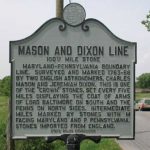 sides of the line spilled their blood on the fields of Gettysburg, Pennsylvania, in the Souths final and fatal attempt to breach the Mason-Dixon line during the Civil War. One hundred and one years after the Mason and Dixon completed their line, the United States finally admitted men of any complexion born within the nation to the rights of citizenship with the ratification of the 14th Amendment…a poorly thought out amendment which continues to cause illegal immigration to this day, due to birth right citizenship.
sides of the line spilled their blood on the fields of Gettysburg, Pennsylvania, in the Souths final and fatal attempt to breach the Mason-Dixon line during the Civil War. One hundred and one years after the Mason and Dixon completed their line, the United States finally admitted men of any complexion born within the nation to the rights of citizenship with the ratification of the 14th Amendment…a poorly thought out amendment which continues to cause illegal immigration to this day, due to birth right citizenship.
 Some people seem to have an exceptional mind. They might be a genius, or they might just be very good at one thing or a few things. Whatever the case may be, they are virtually impossible to beat at that one thing. The game of chess is one that many people don’t understand how to play. I played it many years ago, but I can’t say that I was ever very good at. I could play, and I could beat some players, provided they were not better than novice level. But, there are chess players who could only be classified as genius when it comes to the game of chess.
Some people seem to have an exceptional mind. They might be a genius, or they might just be very good at one thing or a few things. Whatever the case may be, they are virtually impossible to beat at that one thing. The game of chess is one that many people don’t understand how to play. I played it many years ago, but I can’t say that I was ever very good at. I could play, and I could beat some players, provided they were not better than novice level. But, there are chess players who could only be classified as genius when it comes to the game of chess.
Two such players were 26 year old Donald Byrne, who on October 17, 1956, took part in what was destined to be called The Game of the Century. In the end Byrne would lose the game to 13 year old Bobby Fischer, in the Rosenwald Memorial Tournament in New York City. The competition took place at the Marshall Chess Club. It was nicknamed “The Game of the Century” by Hans Kmoch in Chess Review. Kmoch wrote, “The following game, a stunning masterpiece of combination play performed by a boy of 13 against a formidable opponent, matches the finest on record in the history of chess prodigies.”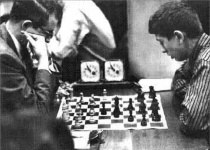
I don’t suppose Mr Byrne expected to be bested by a 13 year old boy, nor did he likely appreciate all the publicity that came of his unfortunate loss. Donald Byrne was one of the leading American chess masters at the time of this game. He won the 1953 U.S. Open Championship, and later represented the United States in the 1962, 1964, and 1968 Chess Olympiads. He became an International Master in 1962, and probably would have risen further if not for ill health. Robert “Bobby” Fischer (1943–2008) was at this time a promising young master. Following this game, he had a meteoric rise, winning the 1957 U.S. Open on tiebreaks, winning the 1957–58 U.S. (Closed) Championship, and all seven later championships in which he played, qualifying for the Candidates Tournament and becoming in 1958 the world’s youngest grandmaster at the age of 15. He won the world championship in 1972, and is considered by many to be the greatest chess player of all time.
According to Kmoch’s recap of the game, Fischer, who was playing Black, demonstrated noteworthy innovation 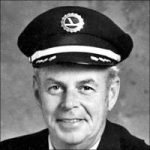 and improvisation. Byrne, who was playing White, after a standard opening, makes a seemingly minor mistake on move 11, losing a tempo by moving the same piece twice. Fischer pounces with brilliant sacrificial play, culminating in a queen sacrifice on move 17. Byrne captures the queen, but Fischer gets far too much material for it…a rook, two bishops, and a pawn. At the end, Fischer’s pieces coordinate to force checkmate, while Byrne’s queen sits, useless, on the other side of the board. Responding to an interviewer’s question about how he was able to bring off such a brilliant win, Fischer said, “I just made the moves I thought were best. I was just lucky.” Looking at his lifelong record, I doubt that anyone would agree with that statement. Fischer’s wins were anything but luck. They were rather a matter of skill, focus, and a strategic mind.
and improvisation. Byrne, who was playing White, after a standard opening, makes a seemingly minor mistake on move 11, losing a tempo by moving the same piece twice. Fischer pounces with brilliant sacrificial play, culminating in a queen sacrifice on move 17. Byrne captures the queen, but Fischer gets far too much material for it…a rook, two bishops, and a pawn. At the end, Fischer’s pieces coordinate to force checkmate, while Byrne’s queen sits, useless, on the other side of the board. Responding to an interviewer’s question about how he was able to bring off such a brilliant win, Fischer said, “I just made the moves I thought were best. I was just lucky.” Looking at his lifelong record, I doubt that anyone would agree with that statement. Fischer’s wins were anything but luck. They were rather a matter of skill, focus, and a strategic mind.

 I think that most people know about the simple, but imaginary way of making a boo-boo all better. It’s all about the power of a healing kiss. It starts when our little ones fall down, and they really aren’t hurt, but they still need some reassurance that everything is going to be alright. The simplest way to let them know that is to kiss it better. Before long, they are coming to you so you can kiss their elbow, their knee, or their head…and you know they really just like your healing kisses…even if there is no current boo-boo.
I think that most people know about the simple, but imaginary way of making a boo-boo all better. It’s all about the power of a healing kiss. It starts when our little ones fall down, and they really aren’t hurt, but they still need some reassurance that everything is going to be alright. The simplest way to let them know that is to kiss it better. Before long, they are coming to you so you can kiss their elbow, their knee, or their head…and you know they really just like your healing kisses…even if there is no current boo-boo.
Pretty soon you find your little angel coming to you to re-kiss the same boo-boo over and over again. It doesn’t hurt anymore, the scrape, scab, and bruise are long gone, but the memory of how awesome it is to have mommy or daddy kiss it better is enough to make them feel very secure. It isn’t that these children are afraid of anything, but rather that they like knowing that their parents will always be there when they need them. Those little healing kisses are a great way to show your little one that you love them, and you will do everything in your power to protect them, and in the absence of being able to prevent a boo-boo, you will always kiss it and make it better.
There can be one little problem with kissing a boo-boo better, however…especially one that is days or weeks old. That is when you plant your healing kiss on the wrong spot. The other night I was visiting my sister, Cheryl Masterson, when her granddaughter, Aleesia Spethman came up to me and showed me a boo-boo on her foot. 
 I looked at her foot quickly, but couldn’t see anything. So, I kissed my finger and touched it to the bottom of the foot she had placed on my lap. That was the wrong move!! Aleesia informed me that I had kissed the wrong spot. The real boo-boo was actually on the side of her big toe. So, I quickly obliged her and kissed my finger, and touched it to the side of her big toe. Aleesia smiled at me, and went merrily on her way. Thankfully when adults goof up by kissing the wrong spot, kids are quick to forgive, provided we correct the offending error.
I looked at her foot quickly, but couldn’t see anything. So, I kissed my finger and touched it to the bottom of the foot she had placed on my lap. That was the wrong move!! Aleesia informed me that I had kissed the wrong spot. The real boo-boo was actually on the side of her big toe. So, I quickly obliged her and kissed my finger, and touched it to the side of her big toe. Aleesia smiled at me, and went merrily on her way. Thankfully when adults goof up by kissing the wrong spot, kids are quick to forgive, provided we correct the offending error.
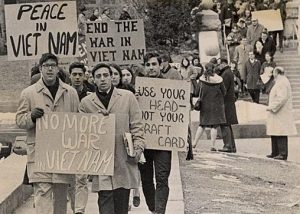 Registering for the draft is a requirement when a young man reaches 18 years of age. There is no draft in the United States anymore, but by registering the young men, the government could hold a draft, should a war bring such a need. During the Vietnam War, there were a lot of people who felt that the United States shouldn’t be in the war. Many young men didn’t want any part of it, and they decided to protest the war by burning their draft cards. Of course, this was forbidden by law, but they didn’t care. They were willing to take the chance, if it meant that they could avoid going to war.
Registering for the draft is a requirement when a young man reaches 18 years of age. There is no draft in the United States anymore, but by registering the young men, the government could hold a draft, should a war bring such a need. During the Vietnam War, there were a lot of people who felt that the United States shouldn’t be in the war. Many young men didn’t want any part of it, and they decided to protest the war by burning their draft cards. Of course, this was forbidden by law, but they didn’t care. They were willing to take the chance, if it meant that they could avoid going to war.
By May 1965 young men were protesting by burning their draft cards with greater frequency around the United States. To limit this kind of protest…in August 1965 the United States Congress enacted a law to broaden draft card violations to punish anyone who “knowingly destroys, knowingly mutilates” his draft card. Then, on October 15, 1965, in New York, David Miller, a young Catholic pacifist, became the first US war protestor to burn his draft card at a protest rally, in direct violation of a recently passed law forbidding such acts. Agents from the Federal Bureau of Investigation later arrested him. He was tried, found guilty, and sentenced to two years imprisonment, but that did not stop the protesting or the burning of draft cards. Subsequently, 46 men were indicted for burning their draft cards at various rallies, and four major court cases were heard. One of them, United States v. O’Brien, was argued before the Supreme Court. The act of draft card burning was defended as a symbolic form of free speech, a constitutional right guaranteed by the First Amendment. The Supreme Court decided against the draft card burners. It determined that the federal law was justified and that it was unrelated to the freedom of speech. This outcome was criticized by legal experts.
From 1965 to 1973, few men in the United States were convicted of burning their draft cards, and some 25,000 went unpunished. I suppose it was difficult to wrap our minds around the idea imprisonment for our young men over a protest. Still, it was illegal. And something had to be done. Before 1965, the act of burning a draft card was already prohibited by US statute and the registrant was required to carry the card at all times. Any destruction of the card was against the law. Also, it was entirely possible for a young man to destroy his draft card and still answer the call to service by appearing at an induction center and serving in the military. It also seems to me that if they had registered, that the government also had a copy of the registration, so if they were going to be drafted, having or not having the card was really a formality. And it was possible for a registrant to faithfully keep his card on his person but fail to appear when called. The draft  card burning was an act of protest against the war, more than it was a way to avoid the draft. Still, the image of draft card burning was powerful, and very influential in American politics and culture. Photos appeared in magazines, newspapers and on television. It was proof of a political divide between those who backed the United States government and its military goals and those who were against any United States involvement in Vietnam. With the political upheaval, Richard Nixon ran for president in 1968 on a platform based largely on putting an end to the draft, hoping to put an end to protesters burning their cards. As president, Nixon indeed did end the draft in 1973, rendering the symbolic act of draft card burning unnecessary, and registering just a requirement.
card burning was an act of protest against the war, more than it was a way to avoid the draft. Still, the image of draft card burning was powerful, and very influential in American politics and culture. Photos appeared in magazines, newspapers and on television. It was proof of a political divide between those who backed the United States government and its military goals and those who were against any United States involvement in Vietnam. With the political upheaval, Richard Nixon ran for president in 1968 on a platform based largely on putting an end to the draft, hoping to put an end to protesters burning their cards. As president, Nixon indeed did end the draft in 1973, rendering the symbolic act of draft card burning unnecessary, and registering just a requirement.

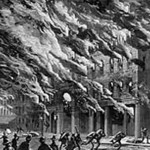 On October 8, 1871, one of the worst fires in history started in Chicago. Rumor has it that a cow kicked over a lantern in a barn, and the ensuing fire killed more than 250 people, left 100,000 homeless, destroyed more than 17,400 structures and burned more than 2,000 acres. According to the legend, the fire broke out after the cow, belonging to Mrs. Catherine O’Leary, kicked over a lamp, setting first the barn, located on the property of Patrick and Catherine O’Leary at 137 Dekoven Street on the city’s southwest side, then the whole city on fire. You’ve probably heard some version of this story yourself. People have been blaming the Great Chicago Fire on the cow and Mrs. O’Leary, for more than 130 years. Mrs. O’Leary denied this charge. Recent research by Chicago historian Robert Cromie has helped to debunk this version of events.
On October 8, 1871, one of the worst fires in history started in Chicago. Rumor has it that a cow kicked over a lantern in a barn, and the ensuing fire killed more than 250 people, left 100,000 homeless, destroyed more than 17,400 structures and burned more than 2,000 acres. According to the legend, the fire broke out after the cow, belonging to Mrs. Catherine O’Leary, kicked over a lamp, setting first the barn, located on the property of Patrick and Catherine O’Leary at 137 Dekoven Street on the city’s southwest side, then the whole city on fire. You’ve probably heard some version of this story yourself. People have been blaming the Great Chicago Fire on the cow and Mrs. O’Leary, for more than 130 years. Mrs. O’Leary denied this charge. Recent research by Chicago historian Robert Cromie has helped to debunk this version of events.
From that event, came a proclamation by President Calvin Coolidge that the first National Fire Prevention Week be held on October 4-10, 1925. The move started a tradition recognizing October as Fire Prevention Month, the first week in October becoming Fire Prevention Week, and the second Saturday becoming Home Fire Drill Day. Fire Prevention Week is observed on the Sunday through Saturday period in which October 9 falls, in commemoration of the Great Chicago Fire, which began October 8, 1871, and did most of its damage October 9. The month and week are filled with information designed to teach people how to prevent fire disasters, as well as activities for children designed to teach them too.
None of us wants to have to really get out of a home fire situation, but it is really important that people know how in the unfortunate event that their home does catch on fire. So, the last part of Fire Prevention Month is Home Fire Drill Day, which is today, October 14, 2017. It is a day to plane your escape routes, and practice 
 getting out, especially with children. It is designed also, to point out where you might be vulnerable and what equipment might be needed to make your home safe, such as smoke alarms, fire extinguishers, and escape ladders. Whether you have little ones or not, it is so easy to get confused or disoriented in a fire emergency. Just like in the schools, routine practice makes every step of a fire evacuation a habit, and it could very likely save your life or that of your family. Why not start today?
getting out, especially with children. It is designed also, to point out where you might be vulnerable and what equipment might be needed to make your home safe, such as smoke alarms, fire extinguishers, and escape ladders. Whether you have little ones or not, it is so easy to get confused or disoriented in a fire emergency. Just like in the schools, routine practice makes every step of a fire evacuation a habit, and it could very likely save your life or that of your family. Why not start today?

 My nephew, Ryan Hadlock reminds me more and more of his dad, Chris Hadlock, everyday. He looks like him, talks like him, and acts like him. They also enjoy many of the same things, like sports, especially football and the Broncos. In fact, they are heading to Denver this weekend for a game. Ryan also loves camping, music, and most of all family. Ryan and his wife, Chelsea, who have been married nine years now, are raising two sweet children, Ethan and Aurora.
My nephew, Ryan Hadlock reminds me more and more of his dad, Chris Hadlock, everyday. He looks like him, talks like him, and acts like him. They also enjoy many of the same things, like sports, especially football and the Broncos. In fact, they are heading to Denver this weekend for a game. Ryan also loves camping, music, and most of all family. Ryan and his wife, Chelsea, who have been married nine years now, are raising two sweet children, Ethan and Aurora.
Recently, Ryan and his family went with Chelsea’s family to Disney World in Florida, where they had a wonderful time. The kids got to meet all the Disney characters, and ride all the great rides. Really, they are at the perfect age for a Disney World adventure…young enough to love the kid stuff and old enough to remember the trip. A wonderful time was had by all, because after all, there is a bit of a kid in all of us, especially Ryan, who will never really grow up, but then I guess that’s what makes him such a fun guy.
Ryan is a hard worker, and often picks up extra shifts at his job at Fleur de Lis, which used to be Anadarko, until they sold it to FDL, as its called. FDL is an oilfield company, and since things are picking up some, they are pretty busy. Ryan is also becoming quite a Do It Yourself guy. Recently, he fixed the central air in their home by himself, and most of us would have no idea what to do with that. Nevertheless, Ryan figured it out and saved his family from the summer heat and saved money too.
It has been a busy year for Ryan and his family, but as far as I’m concerned, the coolest thing that is going on 
 with them is that Ryan is forming a family band. The plan is for Ryan to play the guitar. Ryan learned from his dad, and both are very good. Ethan will be playing the drums. Aurora hasn’t decided what instrument she wants to play in her dad’s band, but I’m sure she will pick something very cool. And the plan is to have Chelsea sing. I think this could be a wonderful musical family. Maybe they could be the Hadlock Family Band. I would definitely attend a performance, if they had one that was open to the public. Today is Ryan’s birthday. Happy birthday Ryan!! Have a great day!! We love you!!
with them is that Ryan is forming a family band. The plan is for Ryan to play the guitar. Ryan learned from his dad, and both are very good. Ethan will be playing the drums. Aurora hasn’t decided what instrument she wants to play in her dad’s band, but I’m sure she will pick something very cool. And the plan is to have Chelsea sing. I think this could be a wonderful musical family. Maybe they could be the Hadlock Family Band. I would definitely attend a performance, if they had one that was open to the public. Today is Ryan’s birthday. Happy birthday Ryan!! Have a great day!! We love you!!

